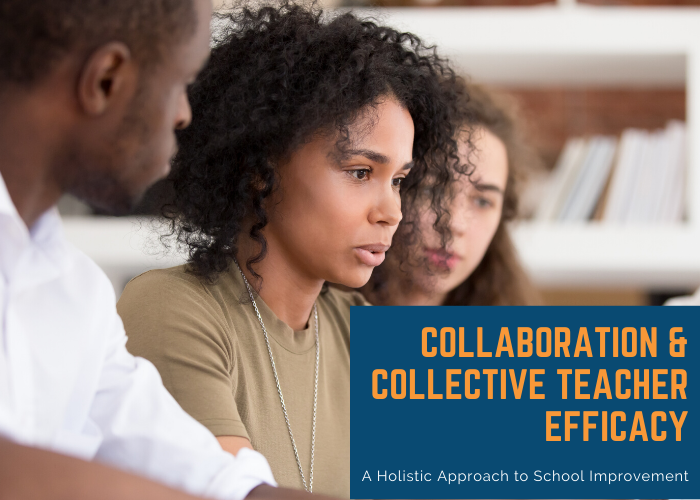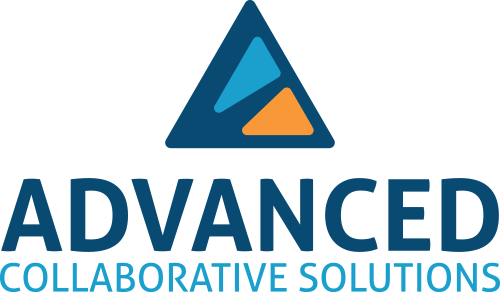Collaboration and Collective Teacher Efficacy—A Holistic Approach to School Improvement

By: Steve Ventura
Common goals, beliefs, and expectations pave the way for successful collaboration. A critical factor to success is the belief that what the group is doing can make a difference and the belief that the work they are doing collaboratively is worth the time and effort. This belief is known as collective efficacy. The organization of the team, how they work together, and the strategies they choose to achieve academic goals contribute significantly to efficacious behavior.
Professor John Hattie spent decades researching the top influences on student achievement in his infamous Visible Learning body of research, and in doing so he identified Collective Teacher Efficacy as a top influence related to student achievement. (Hattie 2009)
What is Collective Efficacy?
Collective Efficacy: “group’s shared belief in its conjoint capabilities to organize and execute the courses of action required to produce given levels of attainment.” - Albert Bandura
The roots of collective efficacy stem from the work of modern researcher Albert Bandura as well as Roger Goddard, Wayne Hoy, and Anita Hoy. Through their research, they identified four sources of efficacy:
- Master Experiences are performance accomplishments and have the greatest influence on shaping and building one’s own self-efficacy. (Bandura 1986) Successful experiences increase expectations for the achievement of goals and thus self-efficacy rises. For example, when a teacher demonstrates mastery in a specific instructional strategy, the application has a positive effect on student learning, then the teacher experiences a self-belief in that area. Typically, Master Experiences are the result of determination and persistence.
- Vicarious Experiences occur as a result of observing colleagues, especially those who are considered effective by successfully performing in challenging conditions. (Bandura 1986) When people see successful attainment of goals from others who are determined and persistent, it motivates them to increase their own belief in demonstrating mastery.
- Verbal persuasion occurs when teachers and leaders are led, by suggestion, into believing they can successfully cope with challenging situations of the past. Bandura found that schools with high levels of social and verbal persuasion had a culture of openness, cooperation, and trust when facing challenges and trying to improve student learning. (Goddard, et al. 2004) Communication and collaboration are essential elements to building collective efficacy in schools.
- Positive emotional and physiological states or affective states are the final sources of collective efficacy. When teachers are facing what seems like an overwhelming challenge, a safe environment allows for risk-taking and alleviates anxiety. Teams can build collective efficacy by focusing efforts on the emotional tone and environment of the school.
Collaborative protocols provide opportunities for teams to build their collective efficacy through ongoing experiences. Successful collaboration occurs during team meetings, when professional development is extended into the classroom, and during coaching sessions.
Collective Efficacy in Action
When researcher Craig Jerald provided a review of research around efficacy, he underscored those teacher actions that significantly contributed to a teacher’s perception of efficacy. He determined that teachers who possess a solid awareness of efficacy often exhibit the following qualities:
- Tend to exhibit greater levels of planning and organization;
- Are more open to new ideas and are more willing to experiment with new methods to better meet the needs of their students;
- Are more persistent and resilient when things do not go smoothly;
- Are less critical of students when they make errors; and
- Are less inclined to refer a difficult student to special education. (Jerald 2007)
Collective efficacy can be built over time, and it starts with collaboration with teams and strong leadership who gives these teachers the time and support to focus on building trust between colleagues. Teams of teachers that have a strong sense of collective efficacy have the highest potential to considerably accelerate student achievement.
References
Bandura, Albert. (1986). Social foundations of thought and action: a social cognitive theory. Englewood Cliffs, N.J.: Prentice-Hall.
Goddard, Roger & Hoy, Wayne & Hoy, Anita. (2004). Collective Efficacy Beliefs: Theoretical Developments, Empirical Evidence, and Future Directions. Educational Researcher. 33. 3-13.
Hattie, J. A.C. (2009). Visible learning: A synthesis of over 800 meta-analyses relating to achievement. New York, NY: Routledge.
Jerald, Craig D. Believing and Achieving. Washington, D.C.: The Center for Comprehensive School Reform and Improvement, 2007. https://files.eric.ed.gov/fulltext/ED495708.pdf

